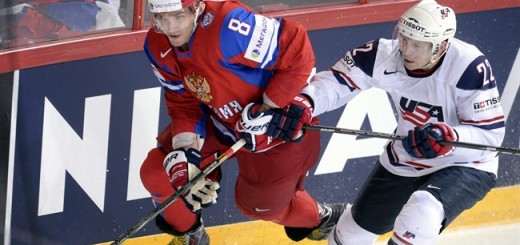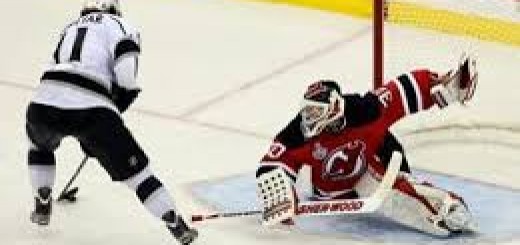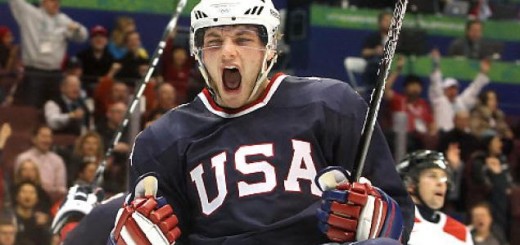Tweet
Last month, two more lawsuits were filed by former NHL players against the NHL alleging that the NHL failed to take adequate steps to protect players from the dangers of concussions and actively encouraged violence in the game in order to increase league revenues. In the over 100-page complaint, the La Couture plaintiffs make many of the same arguments against the NHL that were made in the first concussion lawsuit, Leeman v. NHL. However, the La Couture v. NHL complaint made a number of questionable arguments that have been dissected elsewhere on the Internet.
With multiple class action lawsuits now filed against the NHL, the obvious comparison for most sports fans will be to the concussion litigation that the NFL faced beginning in 2011. The primary concussion litigation against the NFL came to a proposed settlement in 2013 (though that settlement is now in question after it was rejected by the presiding judge). Assuming that the NFL and its former players do come to a settlement, the question will be whether or not the NHL litigation will follow a similar pattern. So far, many of the arguments made by the former NHL players are similar to the arguments made by former NFL players. However, there are a number of differences between the two sports and leagues and how they have each addressed the concussion issue over the past decade. In the complaints filed against the NHL, it is apparent that some of the differences between the NHL and NFL could lead to very different results for the NHL litigation.
Comparisons to Other Professional Hockey Leagues
Though not widely covered in the US, there are a number of European countries, most prominently Russia and Sweden, which have strong professional hockey leagues. The La Couture complaint makes a new argument against the NHL by comparing the NHL’s concussion protocols to the protocols used internationally by other professional leagues. Currently, the NHL puts each player through a number of tests during training camp to ascertain each player’s mental and neurological baseline. During the season, if a player suffers a concussion, the player must be able to meet the baselines set during training camp in order to be cleared to play. Rather than using baseline testing, many European leagues instead require a player who suffers a concussion to sit out for 3 weeks. La Couture argues that the NHL should be using the concussion protocols of the European leagues rather than the current baseline testing.
Unfortunately, the La Couture complaint does not compare and contrast the two types of protocols and instead just assumes that the European protocol is superior simply because it is different than the NHL’s current program. If this argument is going to be persuasive in showing the NHL’s failure to protect its players, the plaintiffs are going to have to allege that there are some flaws in the NHL system.
For example, can the current testing regime be gamed by a player who hopes to set a low baseline score for himself, knowing that doing so will allow the player to return to the ice sooner. On the other hand, does the baseline test itself accurately gauge a players’ neurological and mental health, or can a player pass the test by guessing an answer correctly. While this point was not pressed in the La Couture complaint, plaintiffs should consider developing the argument that there are real problems with baseline testing and that a mandatory period of rest would best protect players.
While there are a few professional football leagues outside of the United States, the NFL did not face the type of international comparison that the NHL will likely need to counteract. Eventhough the NHL has supported the international growth of hockey through the World Cup and allowing its players to participate in the Olympics every four years, the different approach to concussion treatment taken by the European leagues could prove to be a problem for the NHL as it fights these lawsuits.
NHL Concussion Study vs. NFL Concussion Studies
While today the scientific understanding of the connection between concussions and long term health problems is sound, it was only a decade ago that there were still many questions about the potential link. In response to a growing concern over whether concussions could have a long-term effect on player health, both the NFL and NHL decided to fund research to investigate the issue. While both of these studies have been cited by the plaintiffs suing the respective leagues, the studies commissioned by the NHL and NFL were in fact quite different, and the differences in the studies could be key in whether the NHL litigation follows the same pattern as the NFL concussion litigation.
The NFL studies were scientific and medical studies where the purported goal was to actually find whether there was a link between concussions and long-term health problems for football players. Many of the studies commissioned by the NFL were lambasted by the medical community for not following commonly accepted protocols. It has been alleged by the NFL plaintiffs that these studies were actually attempts to muddy the scientific waters as to concussions long-term effects, rather than a good faith effort to understand the medical consequences of head injuries. If the NFL’s studies were actually a sham attempt to distract the scientific community, and the NFL players relying on these studies to understand the risks to their long-term health, then evidence of the sham nature of these studies would have been very persuasive evidence for plaintiffs had the NFL concussion litigation made it through the discovery phase of the trial. However, shortly after the trial judge decided that discovery should commence, the NFL and plaintiffs came to a settlement agreement, ending any chance that plaintiffs in the NHL litigation would have of looking at the NFL’s concussions studies records and emails.
On the other hand, the NHL’s study was just a compilation of the number of concussions suffered by NHL players over the course of almost a decade. Plaintiffs in the NHL litigation have claimed that the limited nature of this study was actually a dereliction of the NHL’s duty to investigate the link between concussions and long-term health problems. In addition, the NHL plaintiffs have also claimed that the players relied on the NHL’s study to investigate the link between concussions and long-term health problems, and that the limited nature of the NHL’s study did not provide the information that the plaintiffs were relying on receiving from the study. Both of these claims may have merit, but the limited nature of the NHL study makes it unlikely that there could be a “smoking gun” email or memo where an NHL employee or executive acknowledges the link between concussions and long-term health problems. The decreased likelihood of such a document means that going to discovery, and possibly trial, may not be as daunting a possibility for the NHL as it could have been for the NFL.
The Next Steps
The NHL is now facing three lawsuits from former players in the United States, with more rumored to be in the works. In the immediate future, the NHL should probably expect to face more lawsuits filed in various jurisdictions across the United States and possibly in Canada. The US-filed cases will most likely be consolidated into a single lawsuit, as all of the lawsuits will be making similar claims of both law and fact against the NHL. After all the cases are consolidated, plaintiffs will have to win the fight over class certification and overcome the argument from the NHL that the claims by the former players are barred because of the Collective Bargaining Agreement (CBA) between the NHLPA and NHL before the case can move to discovery and trial. As the case progresses over the coming months, the differences between the NHL and NFL noted above could have a large effect on whether the NHL ultimately settles the case or if there is a trial where the arguments against the NHL are put to the test.



Recent Comments